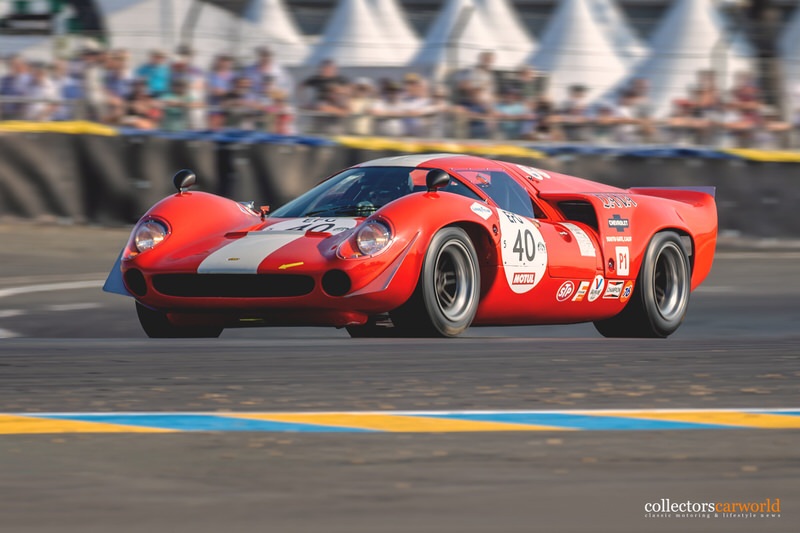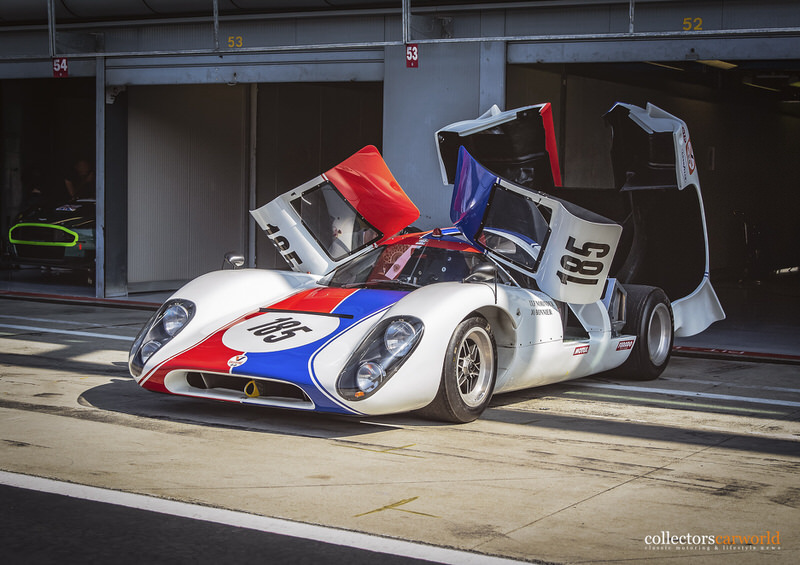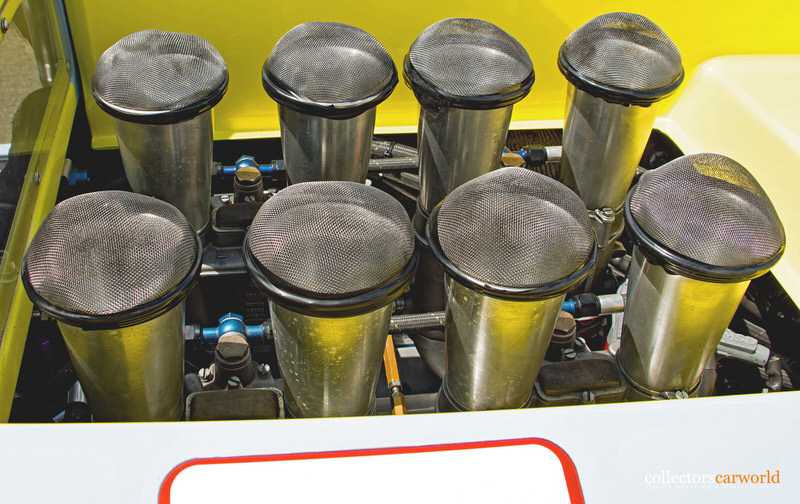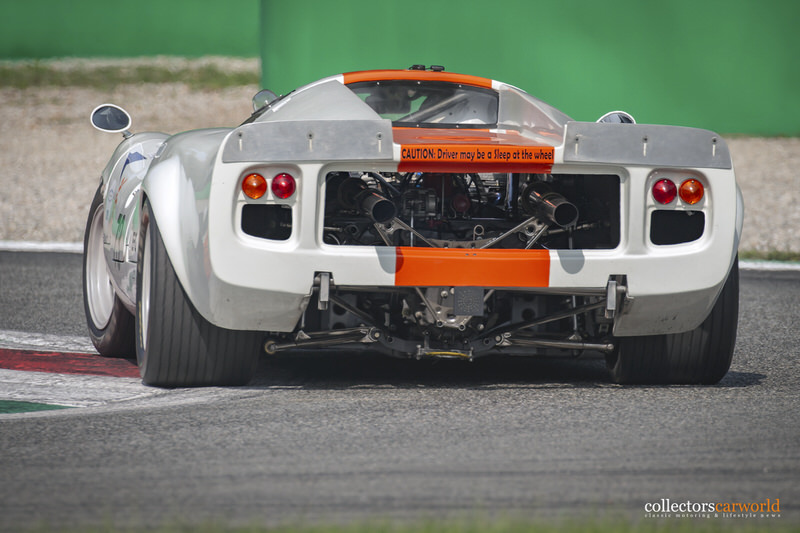The Lola T70 was developed in 1965 by the British racing car manufacturer Lola as a two-seater racing sports car for the unlimited Group 7 sports car racing series in England and the USA. The coupé version built from 1967 onwards then also allowed the car to be used in the one-make world championship. The Lola T70 is regarded as England’s most successful racing two-seater.

The first variant was the Lola T70 Spyder. In 1966 the Lola T70 Mk II Spyder followed, which was replaced by the Lola Mk III Spyder model in 1967. John Surtess became world champion in the Can Am series on Lola in 1966 – but in the following year only one race could be won against the McLaren M6A-Chevrolet. The first closed version was the Lola Mk III Coupé in 1967 – replaced by the Mk IIIB Coupé which appeared in 1969 and was built until 1970. The T70 Mk III Coupé was also available as a road-legal version.

The engine used was a V8 engine from Chevrolet or Aston Martin, which delivered 336 kW (450 hp) from around five litres of displacement at 7000 rpm from 1968 onwards. When in 1968 the rules limited the displacement of the prototypes to three litres, the sports cars built in at least 50 examples were granted five litres of displacement – from 1969 a minimum number of 25 built cars was sufficient to comply with the homologation.

Ford profited from this especially at Le Mans with the already aged GT40, but also Lola with the further developed type T70 Mk III B Coupé, which came from Eric Broadley and Tony Southgate and won the 24 Hours of Daytona in early 1969. A total of 16 examples of this variant were produced between 1969 and 1970. It remained the greatest success of a T70, as Porsche consistently exploited the exemption rules for small-series sports cars in the spring of 1969 with the newly constructed Porsche 917, as did Ferrari in 1970 with the 512S.












About our photographer Rainer Selzer
Rainer Selzer is always ready for a big shot and is focused on historic motorsport.
He is working with us for over three years and visits motorsport events, classic car meetings or car museums. Follow him on instagram @rs65photos or visit his homepage www.rs65photos.com for more!










